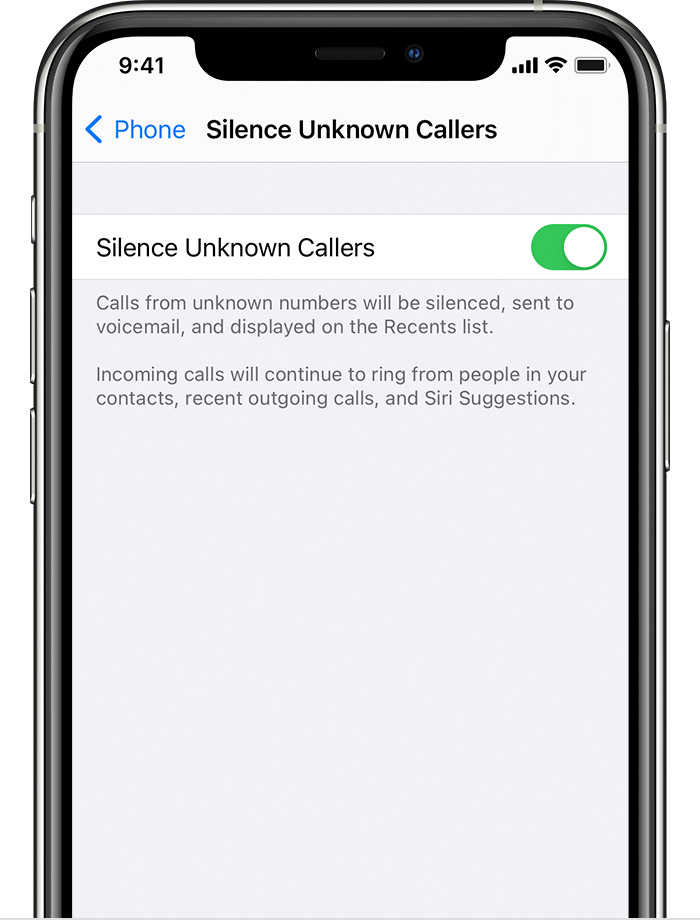Robocalls are automated phone calls that use a computerized autodialer to deliver a pre-recorded message to a large number of recipients. These calls are typically made to landline or mobile phones, and are often used for telemarketing, political campaigns, or other types of promotional messages. Robocalls can also be used to deliver scam or fraudulent messages, such as those that try to trick people into giving away personal information or money.

Robocalls can be a nuisance for many people, as they often come at inconvenient times and can be difficult to block or stop. Some robocalls are also illegal, such as those that use fake caller ID information or that are made to numbers that have been added to the National Do Not Call Registry.
Americans Receive 4 Billion Robocalls per Month.
Types of RoboCalls
Robocalls, automated telephone calls that deliver pre-recorded messages, serve a variety of purposes, ranging from informational to malicious. Understanding the different types can help in identifying and managing unwanted calls.
- Telemarketing Calls: These are used by businesses to promote products or services directly to consumers. While legitimate companies use telemarketing calls to reach potential customers, these calls can sometimes toe the line of intrusion, especially if they disregard the National Do Not Call Registry rules.
- Scam Calls: A nefarious use of robocalling technology involves scams designed to defraud recipients. These calls might impersonate government officials, claim to offer debt relief, or promise free vacations, all with the intent of extracting personal information or financial details from the unsuspecting recipient.
- Debt Collection Calls: Financial institutions and collection agencies utilize robocalls to remind individuals of outstanding debts. While these calls are legitimate, they must adhere to the Fair Debt Collection Practices Act, which sets limits on call times and frequencies.
- Political Calls: During election seasons, political campaigns use robocalls to reach a wide audience quickly. These calls might promote a candidate, provide information about voting locations, or encourage participation in political surveys.
- Charitable Solicitation Calls: Charitable organizations often use robocalls to request donations. These calls typically explain the mission of the charity and how contributions can be made. However, it’s essential to verify the legitimacy of the charity before donating.
- Emergency Alerts: Government agencies use robocalls for public service announcements and emergency alerts. These might include severe weather warnings, Amber alerts, or other urgent community advisories.
- Appointment Reminders: Healthcare providers, service companies, and other businesses use robocalls to remind customers of upcoming appointments or service schedules. These calls are typically welcome as they provide useful reminders.
- Survey Calls: Market research companies use robocalls to conduct surveys. These calls ask recipients to answer questions about products, services, or customer satisfaction levels.
How to Stop and Block Robocalls
Installing a reputable call-blocking application on your smartphone can significantly reduce the number of unwanted calls. These apps leverage massive databases of known spam numbers and user reports to filter out potential robocalls before they reach you. It’s important to select an app that continuously updates its database to adapt to the ever-changing tactics of spammers.
Understanding caller ID spoofing is also crucial. Spammers often disguise their phone numbers to appear as if they’re calling from legitimate businesses or even numbers similar to your own. This tactic, known as neighbor spoofing, makes it more likely for individuals to answer the call. Being skeptical of caller ID information and avoiding answering calls from unknown or suspicious numbers can help mitigate the risk.

Implementing STIR/SHAKEN protocols across telecommunication networks marks a significant advancement. These protocols are designed to authenticate caller ID information, ensuring that the caller’s number is legitimate and hasn’t been spoofed. By June 2021, major carriers in the United States were required to implement these standards, making it harder for spammers to successfully spoof caller IDs.
Registering your phone number with the National Do Not Call Registry is another step towards reducing robocalls. While this won’t stop all unwanted calls, as scammers typically don’t respect the registry, it can decrease the overall volume. Additionally, reporting unwanted calls to the Federal Trade Commission (FTC) or Federal Communications Commission (FCC) can help authorities track and take action against repeat offenders.
Setting up a voice-over-IP (VoIP) service with advanced call screening features can provide additional layers of protection. Some VoIP services offer tools like whitelisting, which only allows calls from pre-approved numbers, and nomorobo, a feature that identifies and blocks robocalls.
- Add your phone number to the National Do Not Call Registry: You can add your phone number to the National Do Not Call Registry, which will prevent telemarketers from calling you. However, it won’t stop all robocalls.
- Use call-blocking apps: Many call-blocking apps are available, such as Robokiller, that can block known robocall numbers and even some that are suspected of being robocalls.
- Be cautious about sharing your phone number: Be careful about sharing your phone number with companies or organizations. Check their privacy policies to make sure they won’t share your number with third-party telemarketers.
- Don’t answer calls from unknown numbers: If you don’t recognize the number, let it go to voicemail. Robocallers often hang up if they reach voicemail.
- Hang up immediately: If you do answer a robocall, don’t engage with the caller. Hang up immediately. Don’t press any buttons or speak any words as it may indicate that your number is active and may lead to more calls.
- Use call screening: Many smartphones have call screening features that allow you to screen calls before answering them. You can use this feature to filter out robocalls.
- Use a reverse phone lookup service: A reverse phone lookup service allows you to look up phone numbers that call you to see if they are legitimate.
- Report robocalls: You can report robocalls to the Federal Trade Commission (FTC). This can help the FTC take action against the companies responsible for the calls.
Legitimate Robocalls vs Scam Robocalls
Legitimate robocalls typically serve specific purposes, such as appointment reminders from healthcare providers, alerts from schools, or messages from government agencies. These calls usually provide a clear way to verify the information directly with the issuing institution without asking for personal information over the phone.
Scam robocalls, on the other hand, often employ fear tactics, urgent requests for personal information, or offers that seem too good to be true. They might impersonate authority figures or well-known organizations, demanding immediate action, such as payment for alleged debts or taxes. One red flag is the request for payment through unconventional methods like gift cards, wire transfers, or cryptocurrencies, which are not standard practices for legitimate entities.
Technical scrutiny can also aid in identification. Caller ID spoofing, where the caller disguises their phone number to appear as if it’s coming from a legitimate source, is a common tactic in scam calls. Implementing STIR/SHAKEN caller ID authentication on your phone network can help, as it verifies that the incoming call’s digital certificate matches the phone number. A mismatch suggests potential spoofing.
Engaging with the call can sometimes be revealing. Legitimate robocalls often offer an opt-out mechanism early in the message, complying with regulations that require them to do so. Scam calls typically lack this feature, focusing instead on keeping you on the line or prompting immediate action.
Cross-referencing the phone number with online databases or the company’s official contact information can provide additional verification. If a call claims to be from a specific institution, hang up and contact the institution directly using a verified phone number from their official website or your account documents.
Awareness of typical scam narratives can also serve as a deterrent. Common themes include threats of arrest, immediate disconnection of utility services, or notifications of suspicious activity on your accounts. Legitimate organizations do not operate by inciting panic or demanding secretive actions.
On Average, Americans Receive 1,677 Robocalls per Second.
Examples of Robocall Scams
Robocall scams have become increasingly sophisticated, employing various tactics to defraud individuals. One common example is the IRS scam, where callers impersonate tax officials and claim that the recipient owes back taxes, threatening legal action or arrest unless immediate payment is made, often demanding payment via gift cards or wire transfer.
Another prevalent scam is the tech support fraud, where the caller claims to represent a well-known technology company. They assert that the recipient’s computer is infected with malware and offer to fix the issue for a fee, aiming to gain remote access to the recipient’s computer or personal information.
The Social Security scam involves callers alleging that the recipient’s Social Security number has been suspended due to suspicious activity or linked to a crime. They demand personal information or payment to resolve the supposed issue or reinstate the number.
Lottery or prize scams are also common, where recipients are informed they’ve won a large sum of money or a prize in a sweepstakes they don’t recall entering. To claim the prize, they must pay taxes or fees upfront.
The utility scam targets individuals with calls pretending to be from their utility company, claiming that their services will be disconnected due to unpaid bills unless immediate payment is made, often through untraceable methods.
Healthcare or insurance scams involve calls offering fake health insurance plans, medical devices, or prescription drugs at significantly reduced prices, aiming to collect personal and health insurance information for fraudulent purposes.
The “one-ring” or “wangiri” scam involves robocalls that ring once and hang up, enticing the recipient to call back a premium rate number, resulting in hefty charges.
Reporting Robocalls
Reporting robocalls is an important step in combating this pervasive issue. In the United States, the Federal Trade Commission (FTC) operates the National Do Not Call Registry and accepts complaints about robocalls. Individuals can report unwanted calls by visiting the FTC’s website and navigating to the Do Not Call Registry section, where an online form facilitates the submission of complaints. It’s crucial to provide as much information as possible, including the date and time of the call, the content of the message, and any caller ID information.
The Federal Communications Commission (FCC) also plays a significant role in regulating communications, including robocalls. Complaints can be filed with the FCC through their website by accessing the consumer complaint form. This form allows for the reporting of unwanted calls, including those that may violate caller ID spoofing laws or the Telephone Consumer Protection Act.
Report Robocalls
Report a Robocall to the FCC at FCC.gov
Many third-party apps and services that offer call blocking and identification also allow users to report numbers directly within the app. This community-based approach helps to improve the service for all users by identifying and blocking new spam numbers more quickly.
For scams specifically targeting personal financial information, such as bank account or credit card fraud, reporting to the appropriate financial institutions is critical. Additionally, incidents can be reported to the Internet Crime Complaint Center (IC3), a partnership between the Federal Bureau of Investigation (FBI) and the National White Collar Crime Center (NW3C), which accepts online Internet crime complaints.
When encountering a scam that impersonates a government agency, such as the IRS or Social Security Administration, reporting directly to the respective agency’s fraud department can help them alert the public to new scams and investigate the perpetrators.
Engaging with local and state consumer protection offices by reporting the incident can also be beneficial, as some states have additional resources and regulations regarding robocalls and consumer protection.
2025 Data Sources